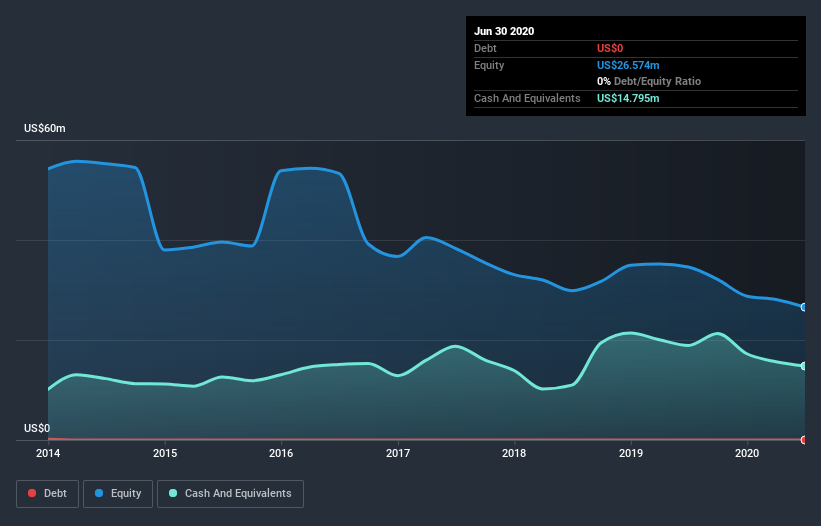AgJunction (TSE:AJX) Is In A Good Position To Deliver On Growth Plans

There's no doubt that money can be made by owning shares of unprofitable businesses. For example, although software-as-a-service business Salesforce.com lost money for years while it grew recurring revenue, if you held shares since 2005, you'd have done very well indeed. Having said that, unprofitable companies are risky because they could potentially burn through all their cash and become distressed.
So, the natural question for AgJunction (TSE:AJX) shareholders is whether they should be concerned by its rate of cash burn. For the purpose of this article, we'll define cash burn as the amount of cash the company is spending each year to fund its growth (also called its negative free cash flow). We'll start by comparing its cash burn with its cash reserves in order to calculate its cash runway.
View our latest analysis for AgJunction
When Might AgJunction Run Out Of Money?
You can calculate a company's cash runway by dividing the amount of cash it has by the rate at which it is spending that cash. As at June 2020, AgJunction had cash of US$15m and no debt. Importantly, its cash burn was US$3.7m over the trailing twelve months. That means it had a cash runway of about 4.0 years as of June 2020. There's no doubt that this is a reassuringly long runway. You can see how its cash balance has changed over time in the image below.
Is AgJunction's Revenue Growing?
We're hesitant to extrapolate on the recent trend to assess its cash burn, because AgJunction actually had positive free cash flow last year, so operating revenue growth is probably our best bet to measure, right now. The grim reality for shareholders is that operating revenue fell by 65% over the last twelve months, which is not what we want to see in a cash burning company. Of course, we've only taken a quick look at the stock's growth metrics, here. This graph of historic earnings and revenue shows how AgJunction is building its business over time.
How Hard Would It Be For AgJunction To Raise More Cash For Growth?
Given its problematic fall in revenue, AgJunction shareholders should consider how the company could fund its growth, if it turns out it needs more cash. Issuing new shares, or taking on debt, are the most common ways for a listed company to raise more money for its business. One of the main advantages held by publicly listed companies is that they can sell shares to investors to raise cash and fund growth. We can compare a company's cash burn to its market capitalisation to get a sense for how many new shares a company would have to issue to fund one year's operations.
Since it has a market capitalisation of US$52m, AgJunction's US$3.7m in cash burn equates to about 7.2% of its market value. Given that is a rather small percentage, it would probably be really easy for the company to fund another year's growth by issuing some new shares to investors, or even by taking out a loan.
How Risky Is AgJunction's Cash Burn Situation?
It may already be apparent to you that we're relatively comfortable with the way AgJunction is burning through its cash. In particular, we think its cash runway stands out as evidence that the company is well on top of its spending. While we must concede that its falling revenue is a bit worrying, the other factors mentioned in this article provide great comfort when it comes to the cash burn. Based on the factors mentioned in this article, we think its cash burn situation warrants some attention from shareholders, but we don't think they should be worried. Taking an in-depth view of risks, we've identified 3 warning signs for AgJunction that you should be aware of before investing.
Of course AgJunction may not be the best stock to buy. So you may wish to see this free collection of companies boasting high return on equity, or this list of stocks that insiders are buying.
This article by Simply Wall St is general in nature. It does not constitute a recommendation to buy or sell any stock, and does not take account of your objectives, or your financial situation. We aim to bring you long-term focused analysis driven by fundamental data. Note that our analysis may not factor in the latest price-sensitive company announcements or qualitative material. Simply Wall St has no position in any stocks mentioned.
Have feedback on this article? Concerned about the content? Get in touch with us directly. Alternatively, email editorial-team@simplywallst.com.

 Yahoo News
Yahoo News 

